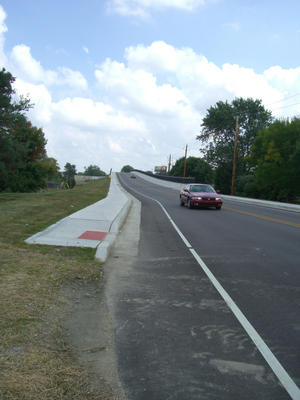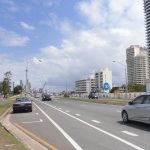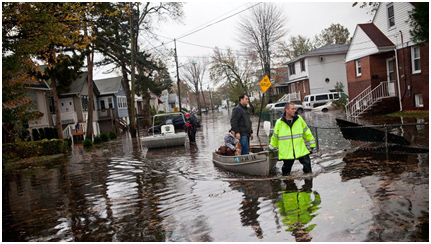New Jersey Future Blog
Let’s Not Go Backward. Let’s Rebuild Better As We Recover
May 26th, 2020 by Peter Kasabach
This op-ed appeared on NJ.com on May 19.
Within a matter of weeks, COVID-19 has brought to the forefront a multitude of social, environmental, and economic challenges that have persisted in New Jersey long before this pandemic struck. When the virus is gone, these very same challenges will make us even more vulnerable to the next inevitable disaster unless we take radical actions to address them now.
Rather than viewing recovery as an effort to return to the pre-pandemic economic status quo, we need to view this phase as a much-needed turning point. We knew we shouldn’t rebuild things back the same way after Superstorm Sandy. And we shouldn’t do that now. An important emphasis during the recovery will be narrowly focused on restoring the economy. But a true recovery for New Jersey will go much further in making our communities stronger, healthier, and more resilient for everyone.
In announcing his Restart and Recovery Commission last month, Gov. Phil Murphy noted it will be charged with balancing “multiple competing needs to ensure we arrive at equitable decisions that work for every community in our state.” In order to do that, New Jersey’s recovery efforts must prioritize a focus on place. We know that the place where we live profoundly affects our physical and mental health, our ability to respond to disasters, and our economic opportunities. We also know that New Jersey remains a highly segregated state and place has long-been a predictor of inequity and vulnerability in the areas of health, resiliency, and income.
Disasters devastate vulnerable communities. Too many New Jersey communities have more than their share of households with low incomes who struggle to pay rent, mortgage and utility bills. Many households in these communities are unable to access food, safe drinking water, and other necessities on a regular basis. They lack the technology and broadband to access work and school remotely. People living in these communities are exposed to more home-based hazards and pollution. Too many New Jersey communities are disconnected from nature and open space. Too many rely on old and vulnerable infrastructure. Many of our communities offer few ways for people to get around easily and safely. And many need more diversified and resilient employment and economic base.
On the upside, COVID-19 has shown us how quickly systems, when demanded by necessity and circumstances, can pivot and change. There are things we are doing now and lessons we are learning that can and should be used to make us stronger. We are learning that we can drive less and that using less fossil fuel reduces air pollution. We are finding that working from home, when possible, has some advantages. We know that natural spaces are beneficial, that food access shouldn’t be taken for granted, and that we rely on frontline workers more than we realized. We know that isolation can be harmful and that we depend on physical proximity to each other more than we may have thought. And we see how a crisis drains resources. New Jersey was devastated by Superstorm Sandy and it has been devastated by COVID-19.
We need to use what we know about New Jersey’s communities and what we are learning from disruptions caused by COVID-19 as we move forward in recovery. We should reduce our dependence on cars while ensuring people in all communities can get around safely and easily. We should increase access to nature and open space in our cities and towns. We should increase our connectedness.
More than anything, we should do what it takes to make our communities less segregated and households less vulnerable. It is imperative that New Jersey’s COVID-19 recovery focuses on creating strong, healthy, resilient communities for everyone. With an equitable place-centered approach New Jersey will move forward and recover stronger.
















